13 Important Native Americans You Didn’t Learn About in School
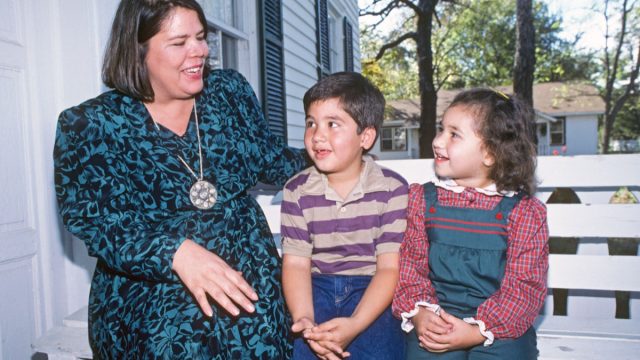
Nearly 400 years after the first Thanksgiving, Americans remain thankful for the vital gifts that indigenous peoples gave their ancestors. Without the help of the native tribes who taught them how to farm and hunt, the Pilgrims who landed at Plymouth Rock in 1620 almost certainly would have perished. But we have a strange way of showing gratitude. Although November is Native American Heritage Month, most Americans can name only a handful of Native American heroes. Squanto, Pocahontas, and Sacagawea come to mind. So do Geronimo, Sitting Bull, and Crazy Horse. It’s a distinguished list, to be sure, but a grossly inadequate one considering that everyone on it was exploited, slaughtered, or otherwise oppressed by Western settlers.
Because the nation was built on their sacrifices, Native Americans deserve to be acknowledged and celebrated not only for what they lost to the United States, but also for what the United States has gained from them. You can do your part to honor their contributions by giving thanks for these 13 individuals and their underappreciated achievements.
1
John Herrington

John Herrington, of the Chickasaw Nation, was the first Native American to fly in space and perform a spacewalk. A retired U.S. Navy aviator and NASA astronaut, the Oklahoma native was a crew member aboard the space shuttle STS-113 Endeavour when it launched from Kennedy Space Center on Nov. 23, 2002. During the mission—which delivered crew and cargo to and from the International Space Station—Herrington performed three spacewalks totaling nearly 20 hours. In honor of his heritage, he carried with him six eagle feathers, a braid of sweet grass, two arrowheads, and the Chickasaw Nation’s flag.
2
Ben Nighthorse Campbell
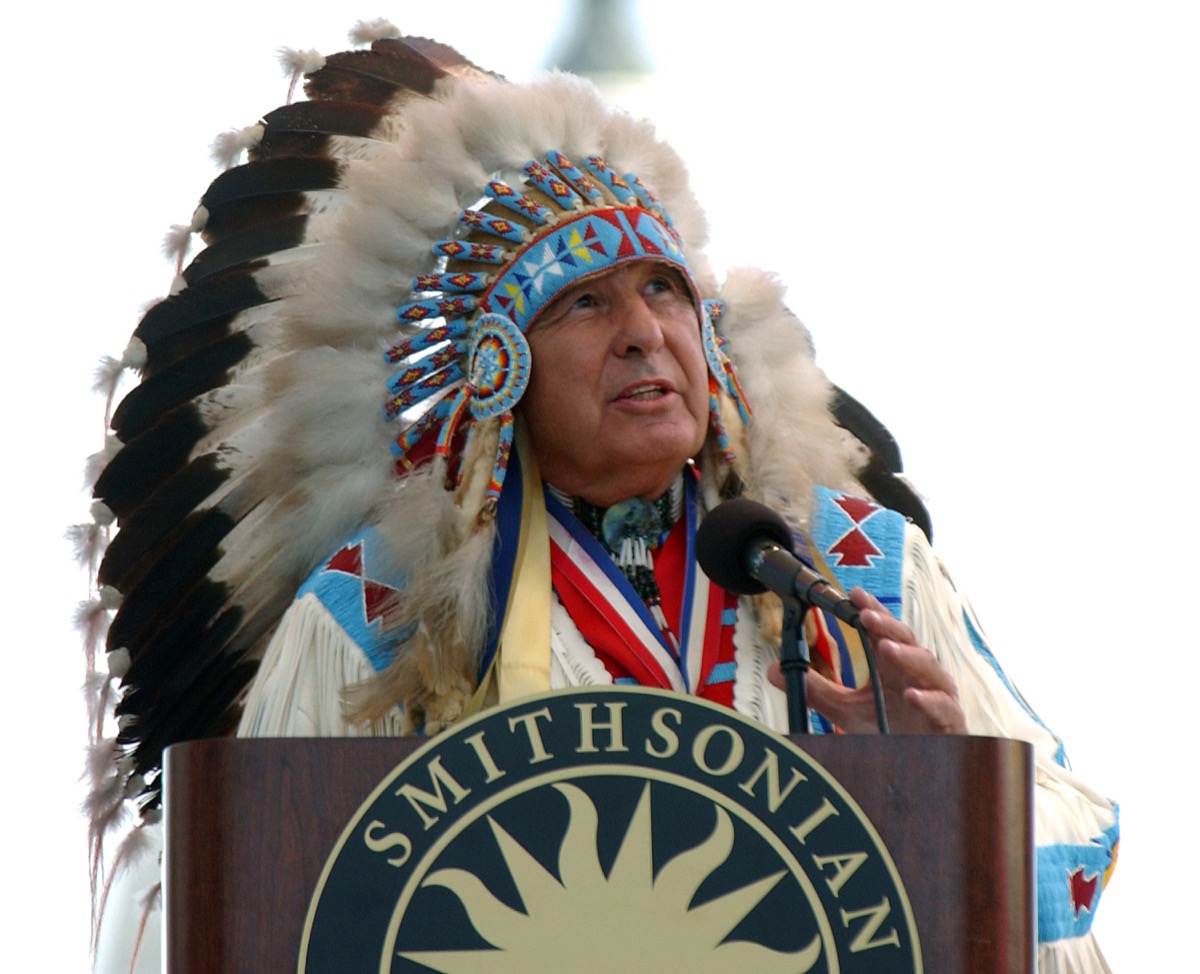
When he was elected to serve Colorado in the U.S. Senate in 1992, Ben Nighthorse Campbell was the only Native American serving in Congress and the first Native American to serve in the Senate in more than 60 years. Descended from a Portuguese immigrant and a Northern Cheyenne Indian, he had many lives before he was a lawmaker. He was a Korean War veteran, an Olympic judo wrestler, and even a renowned jewelry artist. When he retired from the Senate in 2005, his major achievements included passing legislation to secure Native American water rights, protect wilderness areas, prevent fetal alcohol syndrome, create Colorado’s Sand Creek Massacre National Historic Site, and establish the National Museum of the American Indian in Washington, D.C.
3
Susan La Flesche Picotte
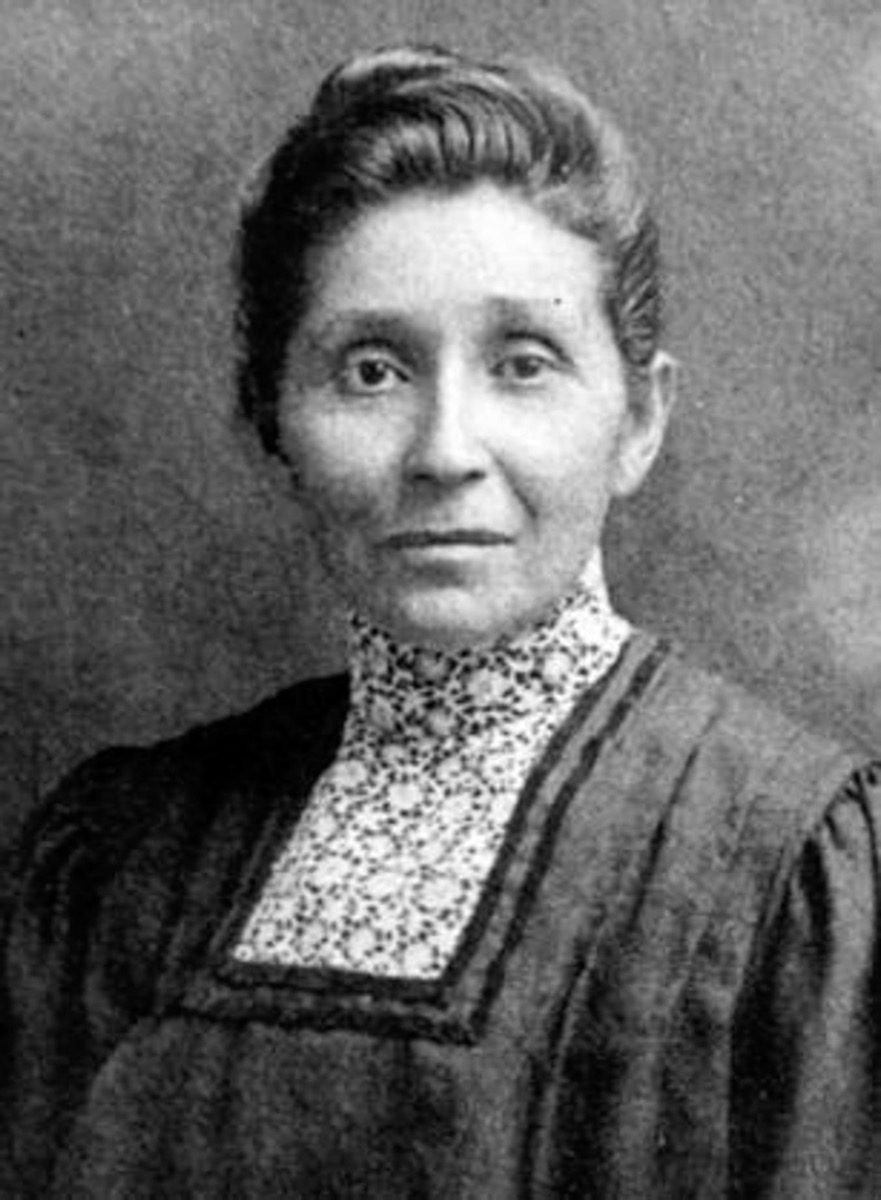
Susan La Flesche Picotte was the first Native American woman to receive a medical degree in the United States, graduating from the Woman’s Medical College of Pennsylvania in 1889. A member of the Omaha tribe, she grew up on the Omaha Reservation in northeast Nebraska, where she once watched a native woman die because the local white doctor refused to give her care. Since that memory was what inspired her to become a physician, she eventually returned to Nebraska, where she established a private practice serving both Native American and white patients. Two years before her death from cancer in 1915, she achieved her life’s dream when she opened her own hospital on the Omaha Reservation—the first hospital built on Native American land without government assistance. Today, the Dr. Susan La Flesche Picotte Memorial Hospital in Walthill, Nebraska, is home to a museum honoring her legacy.
4
Ira Hayes
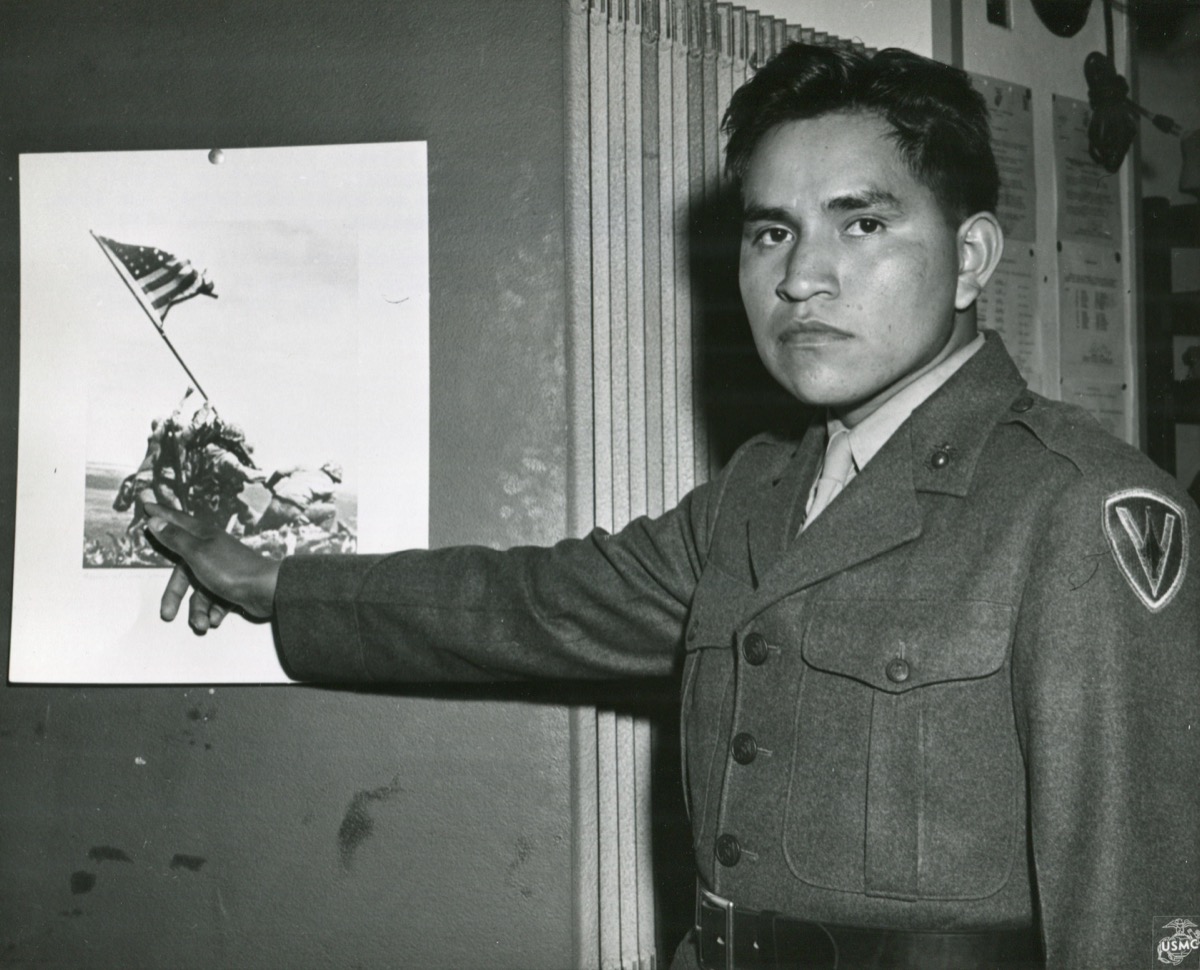
One of the most iconic images from World War II is Joe Rosenthal’s Pulitzer Prize-winning photograph of six U.S. Marines raising the American flag on Mount Suribachi in Iwo Jima, Japan. Although you’ve seen the photo countless times, what you probably don’t know is that one of the Marines in it is Ira Hayes, a Native American born in 1923 on Arizona’s Gila River Indian Reservation, south of Phoenix. Hayes, who was just 22 years old when the photo was taken in 1945, received the Navy and Marine Corps Commendation Medal for his heroic service, and was forever memorialized by Johnny Cash in his song “The Ballad of Ira Hayes.” Out of the 45 men in his platoon, he was one of only 5 to survive.
5
Charlene Teters
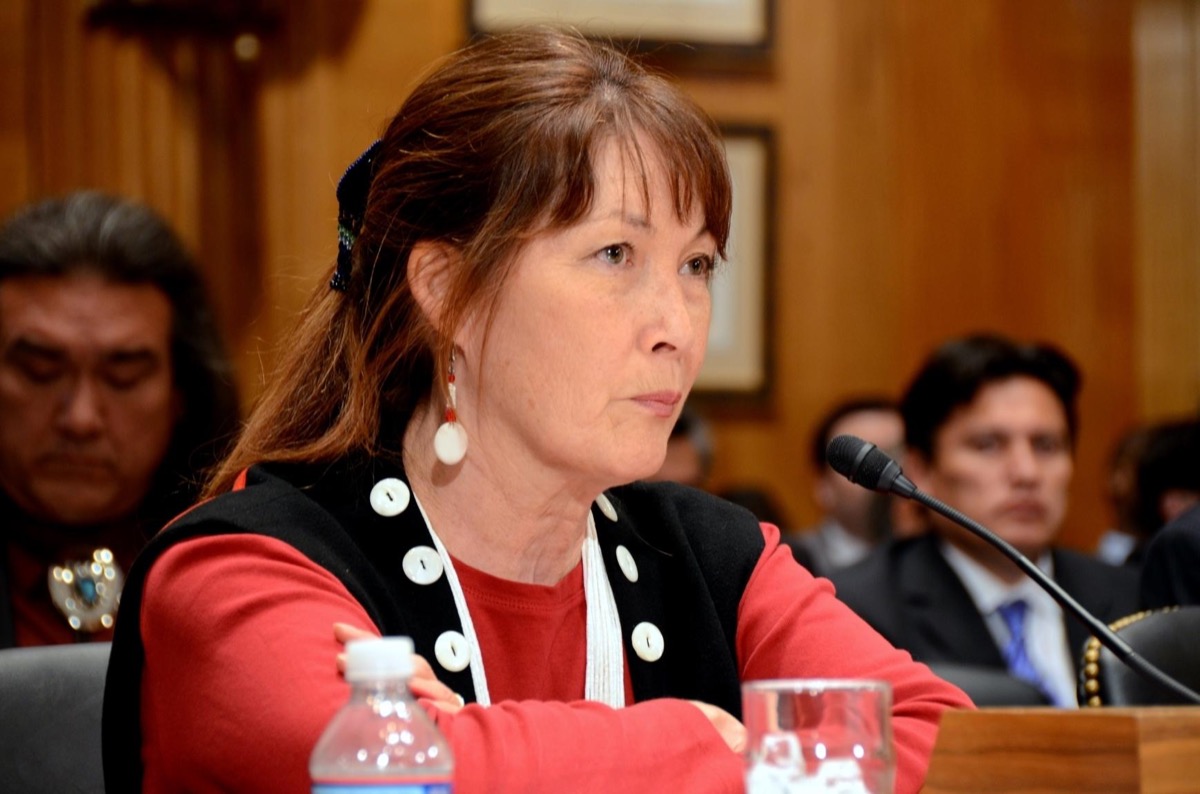
Whether or not you follow sports, you’re probably familiar with the controversy surrounding the use of derogatory Native American stereotypes in team names and mascots. Native American artist and activist Charlene Teters was one of the first to speak out against them. Often called the “Rosa Parks” of Native Americans, Teters—of the Spokane tribe—was a graduate student at the University of Illinois in 1988 when she attended a college basketball game at which the school’s fictitious mascot, Chief Illiniwek, performed a mock tribal dance as fans with painted faces yelled war chants from the stands. Teters subsequently began protesting outside school athletic events and ultimately succeeded in convincing the university to retire its longtime mascot in 2007, more than a decade after she graduated. Her activism is the subject of filmmaker Jay Rosenstein’s 1997 documentary In Whose Honor?
6
Maria Tallchief
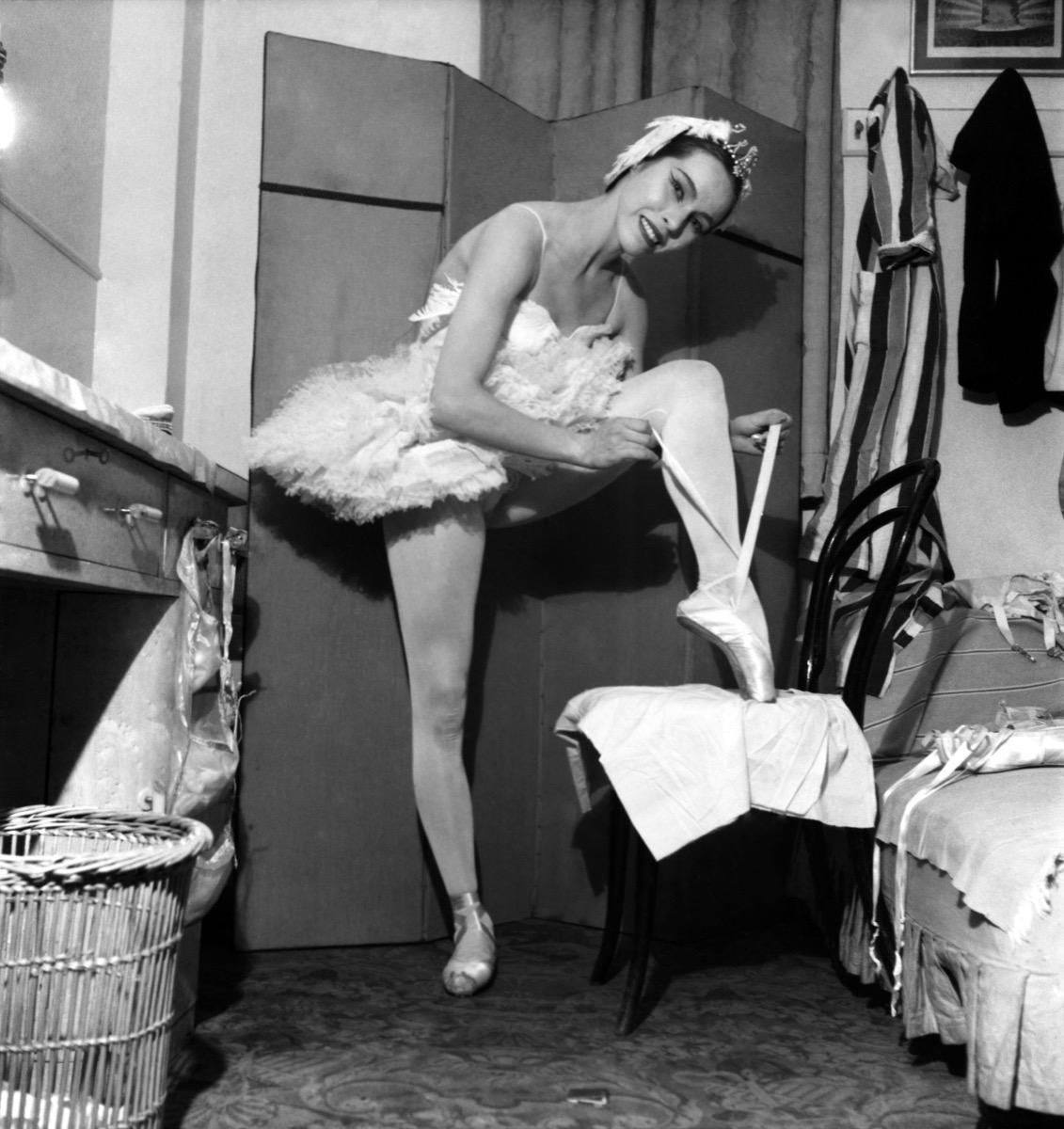
Like so many young people before her, and so many after, Maria Tallchief moved to New York City at the age of 17, chasing a dream. What made her pursuit so unique, however, was her Native American heritage: Tallchief wanted to be a ballet dancer, and American ballet companies did not hire Native American dancers. That changed in 1942, when she joined the Ballet Russe de Monte Carlo. Tallchief, of Oklahoma’s Osage tribe, was the country’s first prima ballerina, dancing for the New York City Ballet in 1946, and she became the first American to dance with the Paris Opera Ballet the following year. She retired from the stage in 1965, then served as director of ballet for the Lyric Opera of Chicago, after which she co-founded the Chicago City Ballet. When she died in 2013, The New York Times called her “one of the most brilliant American ballerinas of the 20th century.”
7
Allan Houser
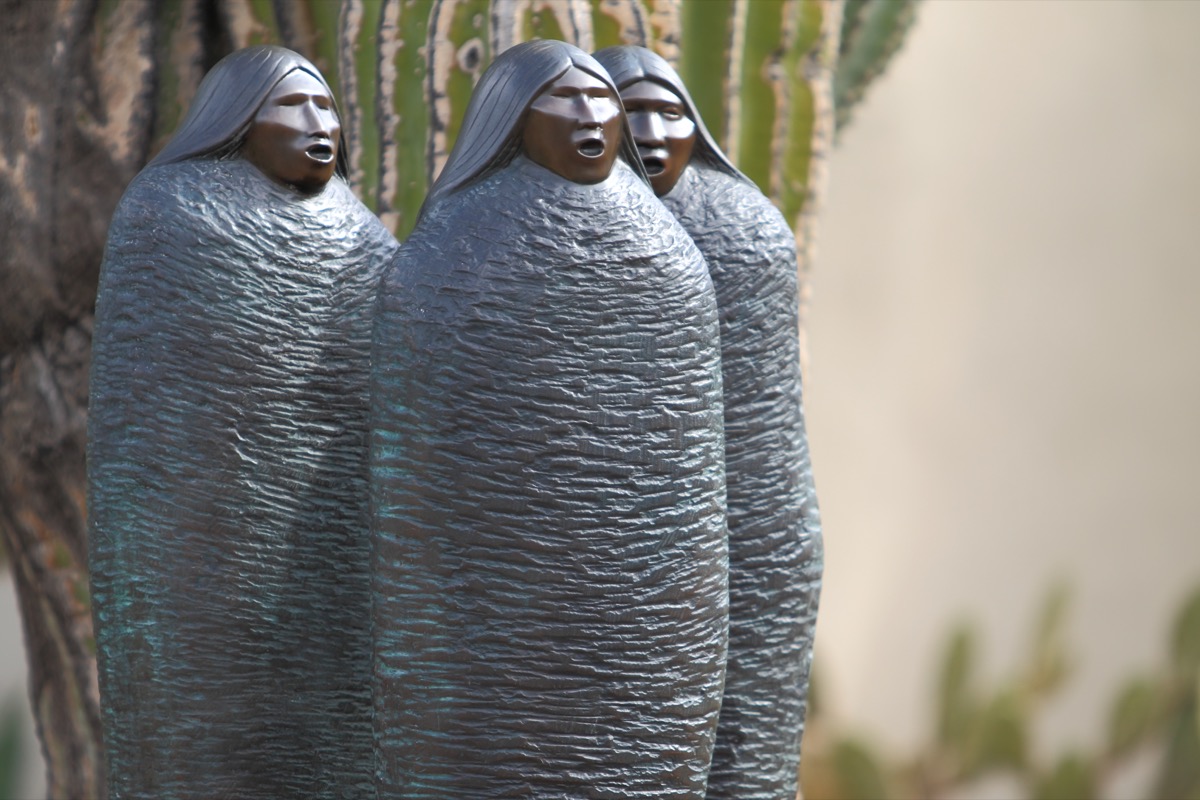
Sculpture has always been special to Native Americans, generations of whom have made pottery for use in cooking, storage, and even tribal storytelling. Sculpture was especially sacred, however, to Native American Allan Houser, who used it to become one of the most significant Modernist artists of the 20th century. Houser, a member of Oklahoma’s Chiricahua Apache tribe, studied painting at the Santa Fe Indian School and earned a national profile painting murals for the federal Works Progress Administration in the 1930s. He launched his sculpting career in 1948 and became known for abstract figures made of bronze, steel, marble, and wood, most of which depicted Native American people, culture, and ideals. In 1992, two years before his death, he became the first Native American to receive the National Medal of Arts.
8
Wilma Mankiller
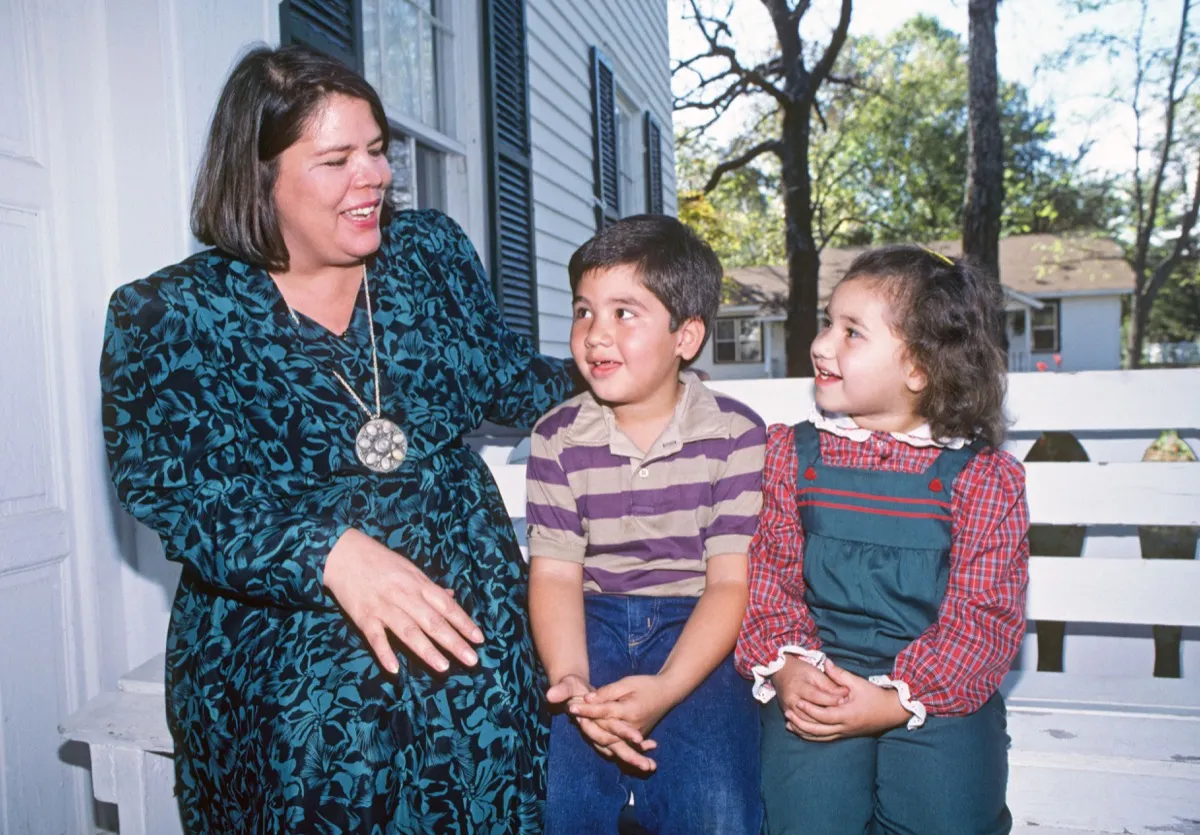
Women’s rights activist Wilma Mankiller was the first woman elected to be chief of the Cherokee Nation. As principal chief from 1985 to 1995—a position she pursued despite considerable obstacles, including rampant sexism and even threats of violence against her—she was known for advancing education, job training, housing, and health care for her people. She doubled annual Cherokee Nation tribal revenue, and tripled tribal enrollment. President Bill Clinton awarded Mankiller the nation’s highest civilian honor, the Medal of Freedom, in 1998. In 2017, she was memorialized in the documentary film Mankiller.
9
Cory Witherill
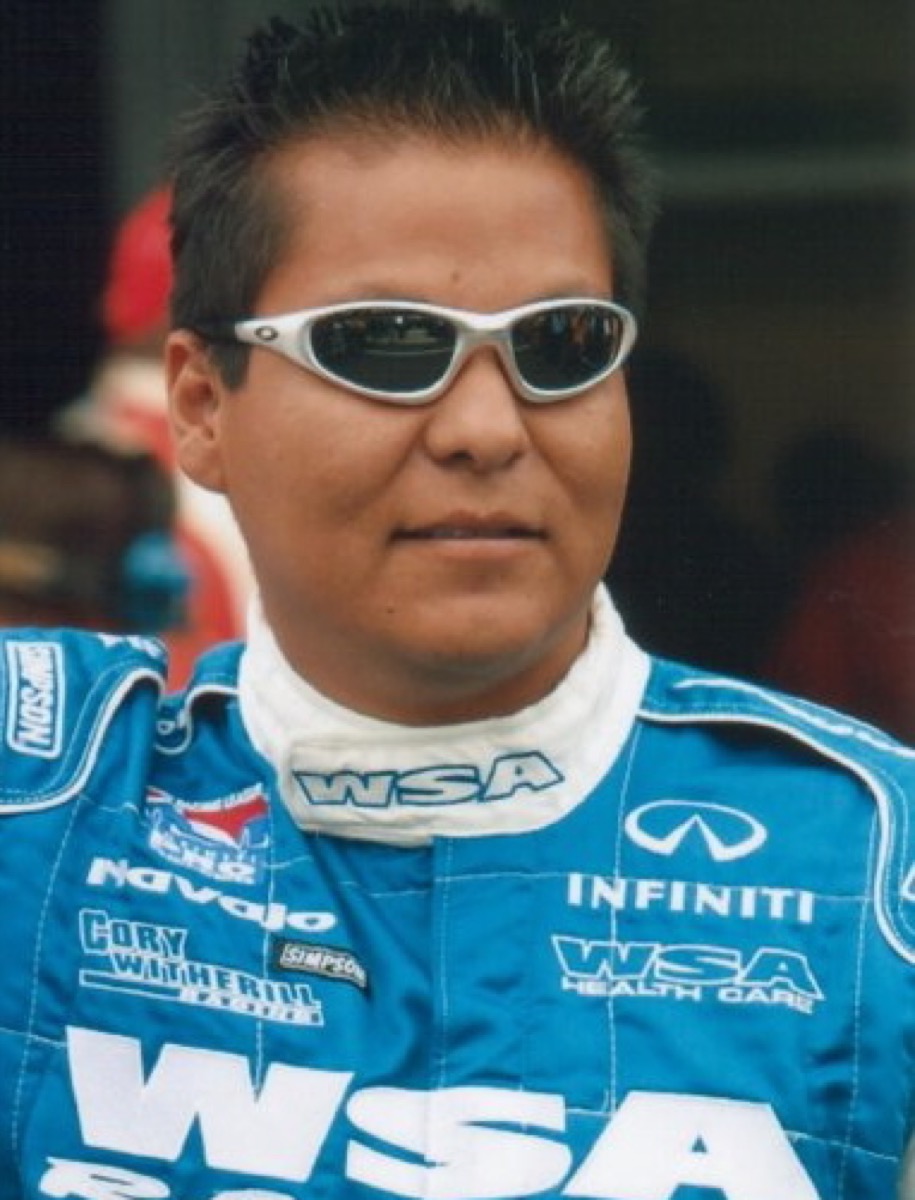
Ever since Spanish explorers brought them to the New World from Europe, horses have been inextricably associated with Native Americans in film, art, and literature. But Los Angeles native Cory Witherill isn’t known for horses—he’s known for horsepower. In 2001, Witherill, a member of the Navajo Nation, became the first Native American to compete in the Indy 500 in more than 40 years, as well as the race’s first-ever full-blooded Native American driver. He placed 19th out of 33.
10
Notah Begay III
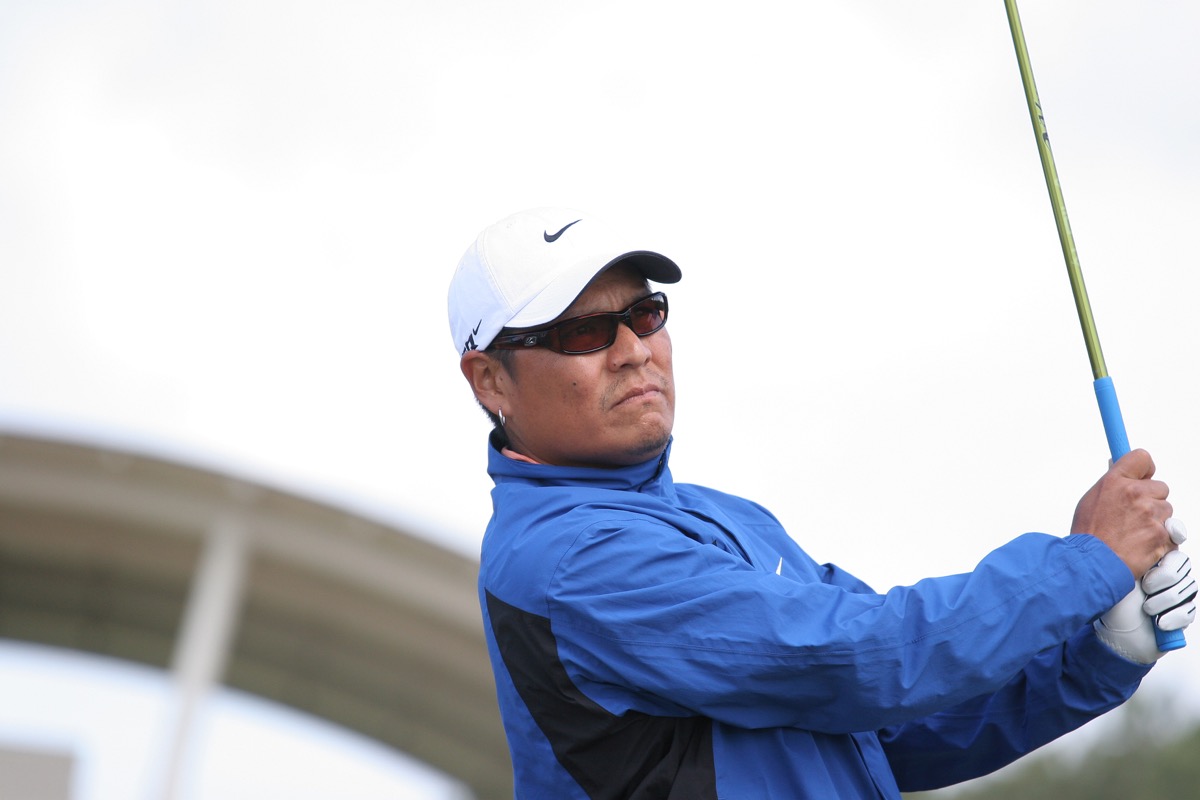
Notah Begay III is another Native American athlete you might not know but should. One-half Navajo, one-quarter San Felipe, and one-quarter Isleta, he’s the only full-blooded Native American to have played on the PGA Tour. Born and raised in Albuquerque, New Mexico, he attended Stanford University on a golf scholarship and led the school’s golf team to a national championship in 1994. He subsequently won four PGA tournaments, and became only the third player in the history of professional golf to shoot 59, the record for lowest 18-hole score. His foundation, The Notah Begay III Foundation, is focused on health and wellness in Native American youth.
11
Jim Thorpe
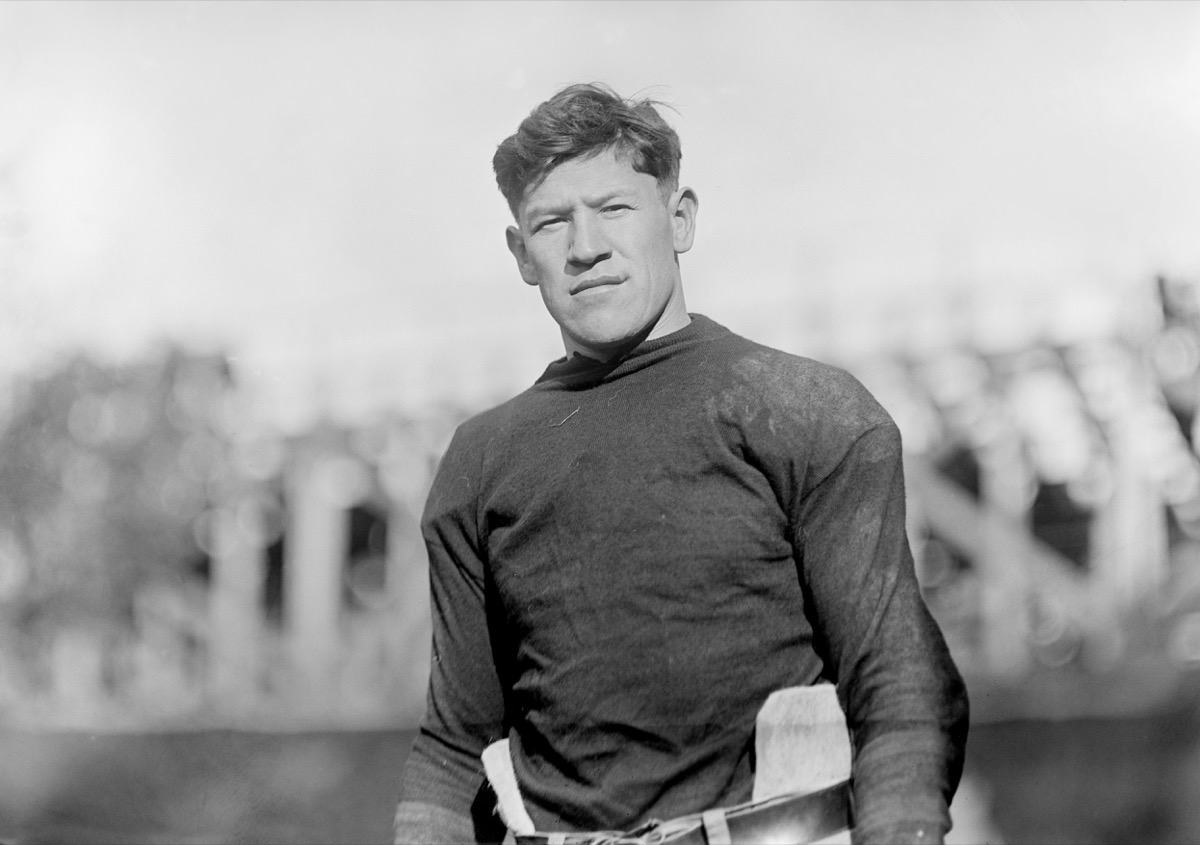
Michael Jordan played professional basketball and baseball, while football great Jim Brown also played college basketball and lacrosse. Perhaps the greatest multi-sport athlete of all time, however, is Jim Thorpe, of the Sac and Fox Nation. Descended from the famous Chippewa warrior Black Hawk, he was the first Native American athlete to win an Olympic gold medal. In fact, he won two of them at the 1912 Olympics, in the decathlon and pentathlon. Although both were taken away because he’d once been paid to play minor-league baseball—a violation of Olympic rules—the International Olympic Committee restored them in 1982, nearly 30 years after his death from a heart attack in 1953. After his Olympic triumph, Thorpe played professional football, baseball, and basketball, and also appeared in 70 films. He even has a town named after him: Jim Thorpe, Pennsylvania.
12
N. Scott Momaday
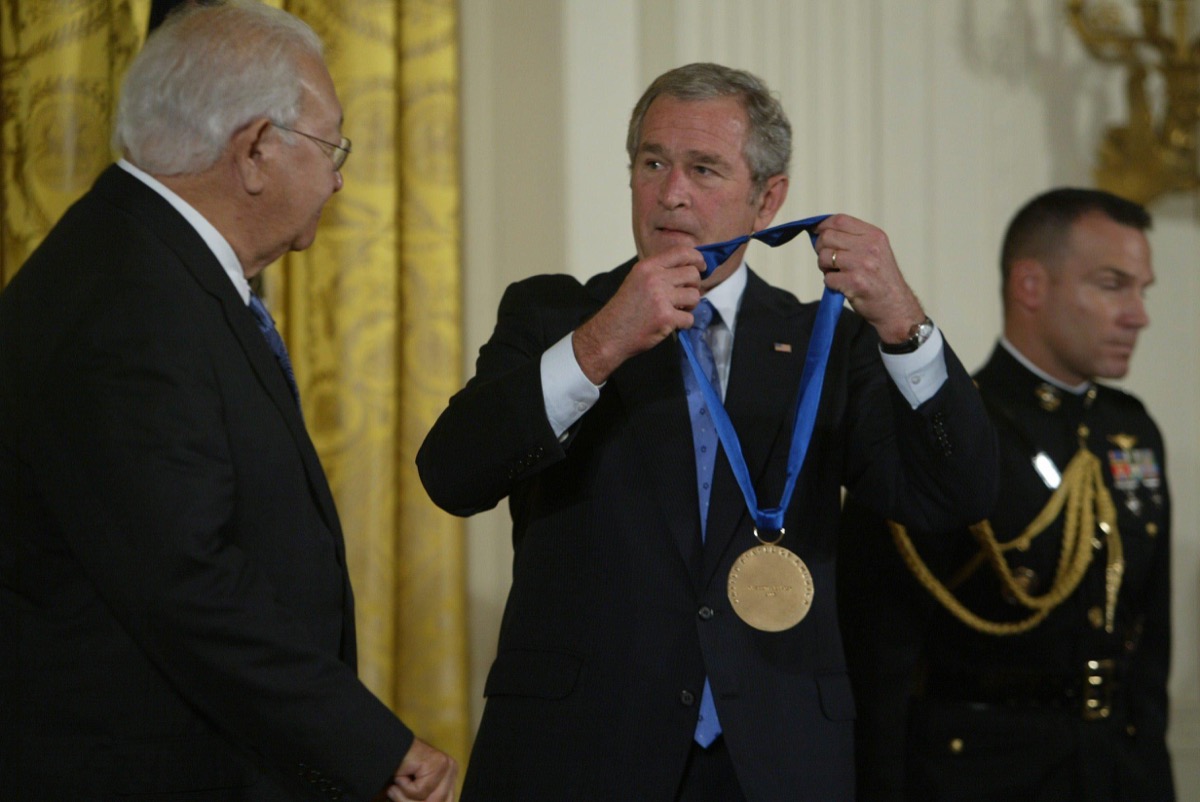
While oral history is sacred in Native American culture, it’s easily eroded by the passage of time and the evolution of language. Kiowa Indian N. Scott Momaday became a prolific writer with the goal of saving his tribe’s precious stories. His first novel—1968’s House Made of Dawn, about a young veteran returning to his Kiowa pueblo after serving in the U.S. Army—won a Pulitzer Prize and is widely credited with starting a renaissance in Native American literature. In his subsequent books of poetry, plays, prose and children’s stories, Momaday continued to marry Native American oral traditions with Western literary forms, earning him a National Medal of Arts, a Guggenheim Fellowship, and 12 honorary degrees.
13
James McDonald
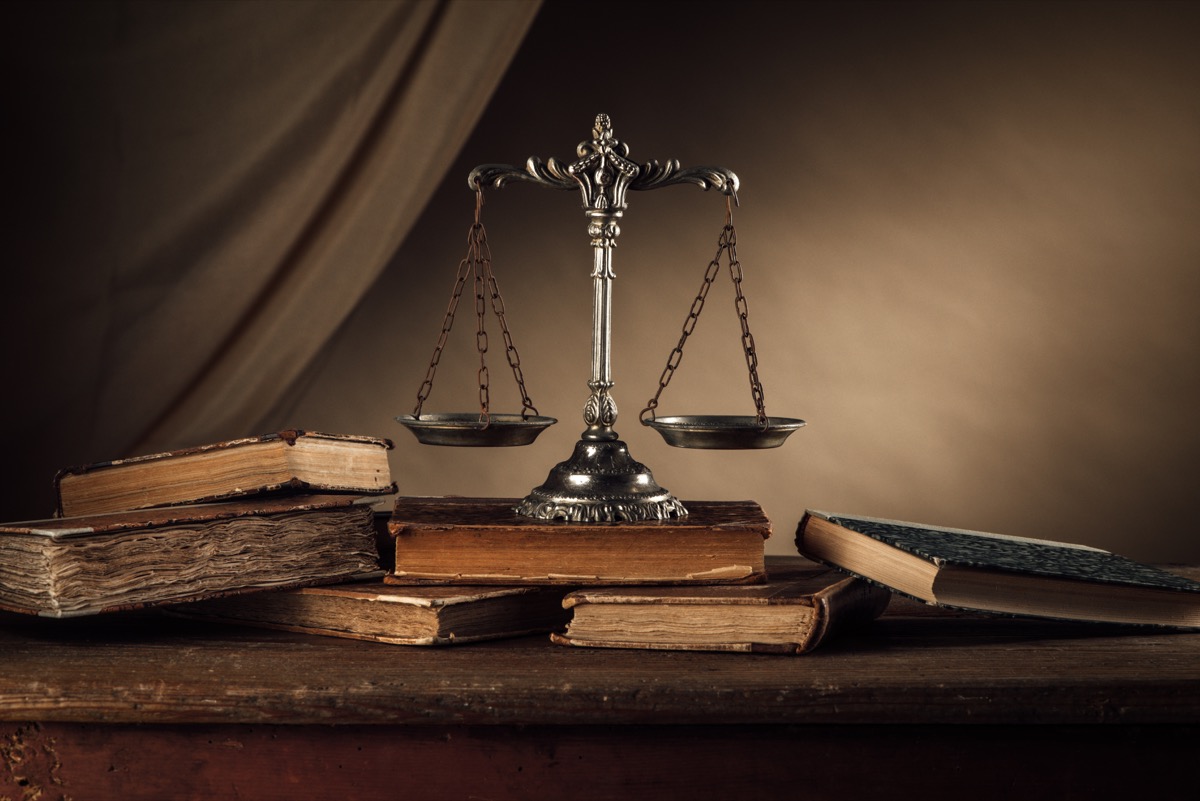
Choctaw Indian James McDonald was the country’s first Native American lawyer. Born and raised in Mississippi, he decided to study law when politicians—led by future president Andrew Jackson—began organizing efforts to remove Native American tribes from their lands in the South and relocate them in the West. Instead of physical resistance, McDonald theorized that he could reason with federal lawmakers on legal grounds. He became a lawyer and subsequently represented the Choctaw tribe in negotiations with politicians, to whom he argued one of the earliest legal cases for Native American rights. “The theory of your government is justice and good faith to all men,” McDonald wrote in an open letter to Congress. “Impressed with that persuasion, we are confident that our rights will be preserved.” Although the tribe ultimately failed—Jackson signed the Indian Removal Act in 1830, sending thousands of Native Americans to their deaths along the Trail of Tears—McDonald’s efforts were the foundation of a fight for indigenous rights that still continues today.